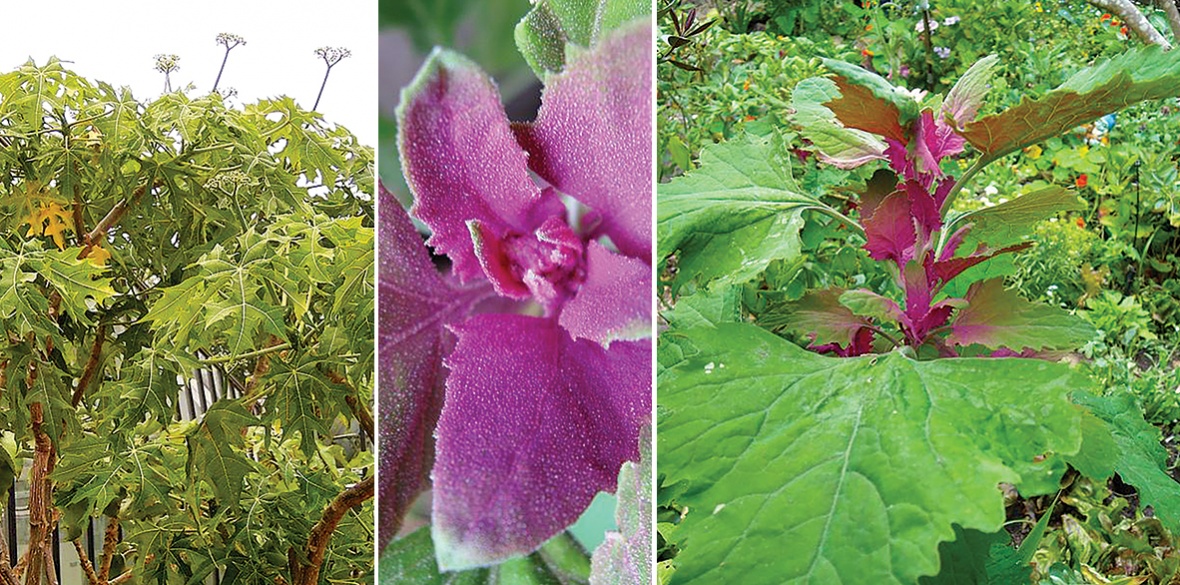This is the last article you can read this month
You can read more article this month
You can read more articles this month
Sorry your limit is up for this month
Reset on:
Please help support the Morning Star by subscribing here
I ALWAYS think Tree Spinach is a slightly off-putting common name for what is known botanically as Chenopodium giganteum. The mental image of a spinach plant the size of a tree really doesn't capture the essence of a quite delicate looking annual, with foliage in bright and almost playful green and magenta.
Admittedly, it can grow pretty tall — between 3 and 6 feet (1-2m) — though it is easily kept below that by removing the growing tip.
The “spinach” part of the name tells you that it has edible leaves, the word spinach being in this context a general rather than specific term. The older leaves can indeed be used as cooked greens; they’re OK, nothing special.
It’s the young foliage that really earns Tree Spinach its place on the allotment or veg patch. Not only are the new leaves pink, but they also appear to be dusted with glitter.
Served raw in a salad they are quite spectacular. In the mouth the young leaves have a slightly floury texture, and a gentle flavour often compared to peas or asparagus.
Tree Spinach (sometimes listed by seed companies as Magenta Spreen) is pretty much a weed, so it’s not hard to grow or fussy about its conditions. You can sow it in trays of compost in an unheated greenhouse from March, or unprotected from April, and later put the seedlings out at about 10 inches (25.5 cm) apart.
Or, in April and May, you can sow it directly into the soil. Just randomly scattering a handful of seeds around the garden after rain will probably do the trick, though to be more certain you can sow them in shallow drills where you want it to grow.
This is a fast-growing plant which prefers a position in full sun in reasonably moist and rich soil, but will survive almost anywhere. It rarely needs watering and never needs feeding.
You can start harvesting the leaves and young shoots as soon as they’re big enough to be worth bothering with. Picking them regularly will keep the plant short and bushy with plenty of replenished young foliage on it.
Alternatively, you can let it grow to its full height which is when it is at its most ornamental. If you do that, it’ll eventually produce red flower spikes followed by seeds.
Tree Spinach is related to fat hen and quinoa, and the grain can be dried and used in cooking.
If allowed to flower it will self-seed very freely, meaning that you won’t need to sow it again next year — seedlings will pop up of their own accord all over the garden.
In theory Tree Spinach could become invasive this way, but in practice it’s not difficult to control. The roots aren’t that deep and you can just dig it out when it comes up in the wrong place.







